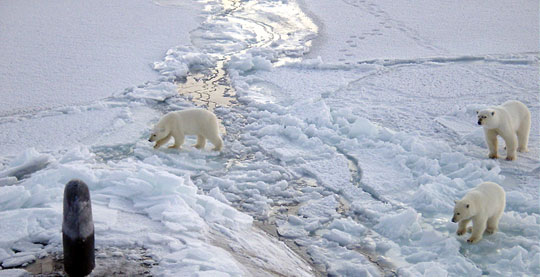The winter in the northern hemisphere of the earth will become colder due to warming in the Arctic, making ice melt more and more powerful.

Photos of the Arctic ice. (Photo: Wikipedia ).
Discovery said the Arctic ice area dropped to near its lowest level this summer. In Greenland, record high temperatures during the year increase the melting speed of ice. Across the Arctic, permafrost is warming, making the area of ice on the surface shrinking. US National Oceanic and Atmospheric Administration (NOAA) scientists say these changes will continue.
' Not only does the ice melt, but the air and ecosystem on Greenland also change. Those changes affect people's lives , 'said Don Perovich, a marine expert in NOAA's research group.
When the ice melts, seawater comes into direct contact with sunlight, causing the water surface temperature to increase. The bigger the temperature of the water, the faster the ice melts. That vicious circle makes the area of the tape unrecoverable.
In the past the Earth's near north wind only moved within the Arctic. As the heat in the Arctic increased, their familiar orbit was broken, causing many cold air masses to advance south. Due to the effects of these gases, many areas in the northern hemisphere become colder. This phenomenon helps us explain why snow covers many parts of the United States even though people in those regions have never witnessed similar phenomena in the past.
' Humans are facing a paradox of climate change. The warming and depletion of Arctic ice area does not increase the temperature anywhere in the globe, but reduces the temperature in low latitudes, making the northern hemisphere's winter cold more ', the team concluded.
 Is the magnetic North Pole shift dangerous to humanity?
Is the magnetic North Pole shift dangerous to humanity? Washington legalizes the recycling of human bodies into fertilizer
Washington legalizes the recycling of human bodies into fertilizer Lightning stone - the mysterious guest
Lightning stone - the mysterious guest Stunned by the mysterious sunset, strange appearance
Stunned by the mysterious sunset, strange appearance